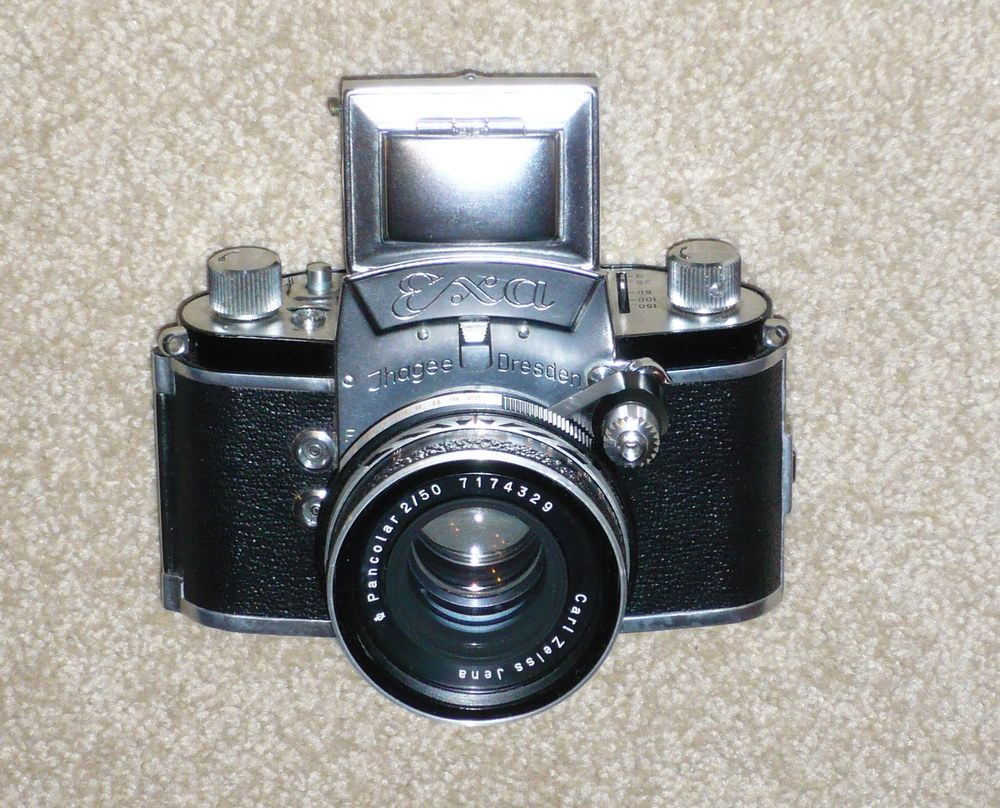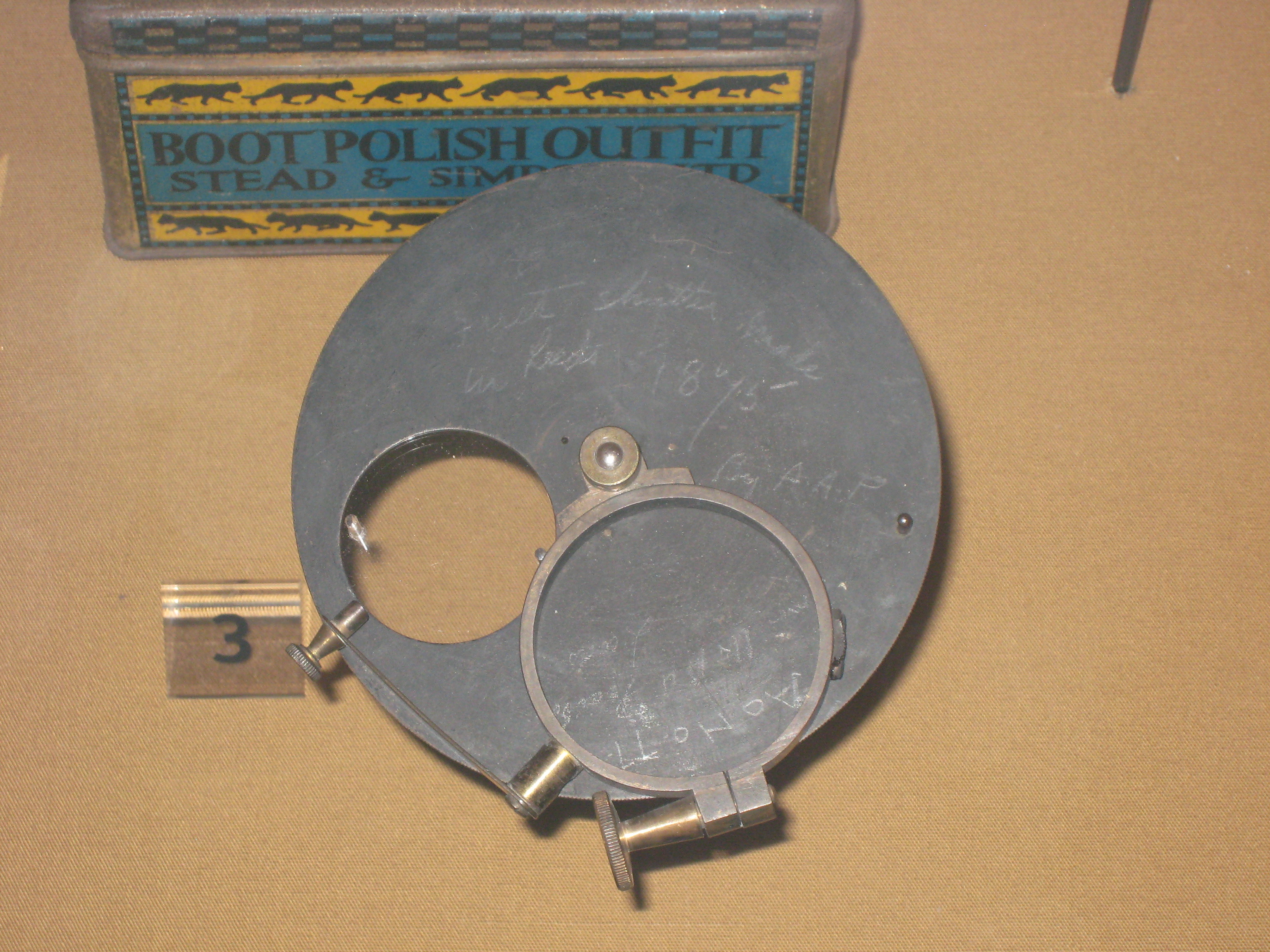|
Instant Return Mirror
In photography, the single-lens reflex camera (SLR) is provided with a mirror to redirect light from the picture taking lens to the viewfinder prior to releasing the shutter for composing and focusing an image. When the shutter is released, the mirror swings up and away allowing the exposure of the photographic medium and instantly returns after the exposure. No SLR camera before 1954 had this feature, although the mirror on some early SLR cameras was entirely operated by the force exerted on the shutter release and only returned when the finger pressure was released. The Asahiflex II, released by Japanese company Asahi (Pentax) in 1954, was the world's first SLR camera with an instant return mirror.Michael R. Peres (2013)''The Focal Encyclopedia of Photography'', page 779 Taylor & Francis Taylor & Francis Group is an international company originating in England that publishes books and academic journals. Its parts include Taylor & Francis, Routledge, F1000 Research or ... [...More Info...] [...Related Items...] OR: [Wikipedia] [Google] [Baidu] |
Single-lens Reflex Camera
A single-lens reflex camera (SLR) is a camera that typically uses a mirror and prism system (hence "reflex" from the mirror's reflection) that permits the photographer to view through the lens and see exactly what will be captured. With twin lens reflex and rangefinder cameras, the viewed image could be significantly different from the final image. When the shutter button is pressed on most SLRs, the mirror flips out of the light path, allowing light to pass through to the light receptor and the image to be captured. History File:Hasselblad 1600F.jpg, Medium format SLR by Hasselblad (Model 1600F), Sweden File:Zenza BRONICA S2 with ZENZANON 100mm F2.8.JPG, Medium format SLR by Bronica (Model S2), Japan. Bronica's later model—the Bronica EC—was the first medium format SLR camera to use an electrically operated focal-plane shutter File:Asahiflex600.jpg, The 1952 ( Pentax) Asahiflex, Japan's first single-lens reflex camera. File:Contaflex BW 2.JPG, The Contaflex III ... [...More Info...] [...Related Items...] OR: [Wikipedia] [Google] [Baidu] |
Viewfinder
In photography, a viewfinder is what the photographer looks through to compose, and, in many cases, to focus the picture. Most viewfinders are separate, and suffer parallax, while the single-lens reflex camera lets the viewfinder use the main optical system. Viewfinders are used in many cameras of different types: still and movie, film, analog and digital. A zoom camera usually zooms its finder in sync with its lens, one exception being rangefinder cameras. History Before the development of microelectronics and electronic display devices, only optical viewfinders existed. Direct optical viewfinders Direct viewfinders are essentially miniature Galilean telescopes; the viewer's eye was placed at the back, and the scene viewed through the viewfinder optics. A declining minority of point and shoot cameras use them. Parallax error results from the viewfinder being offset from the lens axis, to point above and usually to one side of the lens. The error varies with distance, bei ... [...More Info...] [...Related Items...] OR: [Wikipedia] [Google] [Baidu] |
Shutter (photography)
In photography, a shutter is a device that allows light to pass for a determined period, exposing photographic film or a photosensitive digital sensor to light in order to capture a permanent image of a scene. A shutter can also be used to allow pulses of light to pass outwards, as seen in a movie projector or a signal lamp. A shutter of variable speed is used to control exposure time of the film. The shutter is constructed so that it automatically closes after a certain required time interval. The speed of the shutter is controlled by a ring outside the camera, on which various timings are marked. Camera shutter Camera shutters can be fitted in several positions: * Leaf shutters are usually fitted within a lens assembly (''central shutter''), or more rarely immediately behind (''behind-the-lens shutter'') or, even more rarely, in front of a lens, and shut off the beam of light where it is narrow. * Focal-plane shutters are mounted near the focal plane and move to uncover th ... [...More Info...] [...Related Items...] OR: [Wikipedia] [Google] [Baidu] |
Focus (optics)
In geometrical optics, a focus, also called an image point, is a point where light rays originating from a point on the object converge. Although the focus is conceptually a point, physically the focus has a spatial extent, called the blur circle. This non-ideal focusing may be caused by aberrations of the imaging optics. In the absence of significant aberrations, the smallest possible blur circle is the Airy disc, which is caused by diffraction from the optical system's aperture. Aberrations tend to worsen as the aperture diameter increases, while the Airy circle is smallest for large apertures. An image, or image point or region, is in focus if light from object points is converged almost as much as possible in the image, and out of focus if light is not well converged. The border between these is sometimes defined using a " circle of confusion" criterion. A principal focus or focal point is a special focus: * For a lens, or a spherical or parabolic mirror, it is ... [...More Info...] [...Related Items...] OR: [Wikipedia] [Google] [Baidu] |
Photography
Photography is the visual art, art, application, and practice of creating durable images by recording light, either electronically by means of an image sensor, or chemically by means of a light-sensitive material such as photographic film. It is employed in many fields of science, manufacturing (e.g., photolithography), and business, as well as its more direct uses for art, film and video production, recreational purposes, hobby, and Mass communication, mass communication. Typically, a Lens (optics), lens is used to focus (optics), focus the light reflected or emitted from objects into a real image on the light-sensitive surface inside a camera during a timed Exposure (photography), exposure. With an electronic image sensor, this produces an Charge-coupled device, electrical charge at each pixel, which is Image processing, electronically processed and stored in a Image file formats, digital image file for subsequent display or processing. The result with photographic emulsion is ... [...More Info...] [...Related Items...] OR: [Wikipedia] [Google] [Baidu] |
Asahiflex IIB
The Asahiflex was a 35 mm single-lens reflex camera built by the Asahi Optical Corporation (later to become Pentax). It was regarded as the first SLR camera built in Japan. Asahi Optical introduced its first 35 mm camera in 1952. Unlike the majority of Japanese camera manufacturers of the time, Asahi made a conscious decision not to produce a mere German rangefinder copy, a relatively simple task. Instead, Asahi decided to copy the Praktiflex, a 1939 design, made in the German Democratic Republic. Asahi's designers (Nobuyuki Yoshida and Ryohei Suzuki) were convinced of the inherent superiority of the SLR and so proceeded along these lines. This effort resulted in the Asahiflex I, which was also the first Japanese 35 mm SLR. Asahiflex I The Asahiflex I had a non-interchangeable waist-level viewfinder, with a direct optical viewfinder for eye-level use. Like the Praktiflex the Asahiflex I do not have a returning mirror (which means the mirror will only be back to its initial ... [...More Info...] [...Related Items...] OR: [Wikipedia] [Google] [Baidu] |
Pentax
is a brand name used primarily by the Japanese multinational imaging and electronics company Ricoh for DSLR cameras, lenses, sport optics (including binoculars and rifle scopes), and CCTV optics. The Pentax brand is also used by Hoya Corporation for medical products & services, TI Asahi for surveying instruments, and Seiko Optical Products for certain optical lenses. Corporate history Early history The company was founded as Asahi Kogaku Goshi Kaisha in November 1919 by Kumao Kajiwara, at a shop in the Toshima suburb of Tokyo, and began producing spectacle lenses (which it still manufactures). In 1938 it changed its name to , and by this time it was also manufacturing camera/cine lenses. In the lead-up to World War II, Asahi Optical devoted much of its time to fulfilling military contracts for optical instruments. At the end of the war, Asahi Optical was disbanded by the occupying powers, being allowed to re-form in 1948. The company resumed its pre-war activities, manufac ... [...More Info...] [...Related Items...] OR: [Wikipedia] [Google] [Baidu] |
Taylor & Francis
Taylor & Francis Group is an international company originating in England that publishes books and academic journals. Its parts include Taylor & Francis, Routledge, F1000 Research or Dovepress. It is a division of Informa plc, a United Kingdom–based publisher and conference company. Overview The company was founded in 1852 when William Francis joined Richard Taylor in his publishing business. Taylor had founded his company in 1798. Their subjects covered agriculture, chemistry, education, engineering, geography, law, mathematics, medicine, and social sciences. Francis's son, Richard Taunton Francis (1883–1930), was sole partner in the firm from 1917 to 1930. In 1965, Taylor & Francis launched Wykeham Publications and began book publishing. T&F acquired Hemisphere Publishing in 1988, and the company was renamed Taylor & Francis Group to reflect the growing number of imprints. Taylor & Francis left the printing business in 1990, to concentrate on publishing. In 1998 ... [...More Info...] [...Related Items...] OR: [Wikipedia] [Google] [Baidu] |
135 Film Cameras
{{numberdis ...
135 may refer to: *135 (number) *AD 135 *135 BC *135 film, better known as 35 mm film, is a format of photographic film used for still photography *135 (New Jersey bus) 135 may refer to: *135 (number) *AD 135 *135 BC *135 film 135 film, more popularly referred to as 35 mm film or 35 mm, is a format of photographic film used for still photography. It is a film with a film gauge of loaded into a st ... [...More Info...] [...Related Items...] OR: [Wikipedia] [Google] [Baidu] |
SLR Cameras
SLR may refer to: Science and technology * Satellite laser ranging * Scalable Linear Recording tape drive backup * Sea level rise * Self-loading rifle or semi-automatic rifle ** The UK L1A1 SLR rifle * Semi-linear resolution, a search algorithm * Sending loudness rating for microphones * Simple LR parser (Simple Left-to-right parser) * Single-lens reflex camera ** See also: Digital single-lens reflex camera (digital SLR or DSLR) * SLR (company), a virtual reality company * Service List Registry, of audiovisual services Transport * Holden Torana SLR5000 car * Mercedes-Benz 300 SLR * Mercedes-Benz SLR McLaren * Shimano Linear Response, a bicycle component * Sri Lanka Railways * St. Lawrence and Atlantic Railroad reporting mark Other uses * ''Stanford Law Review The ''Stanford Law Review'' (SLR) is a legal journal produced independently by Stanford Law School students. The journal was established in 1948 with future U.S. Secretary of State Warren Christopher as its ... [...More Info...] [...Related Items...] OR: [Wikipedia] [Google] [Baidu] |




.jpg)